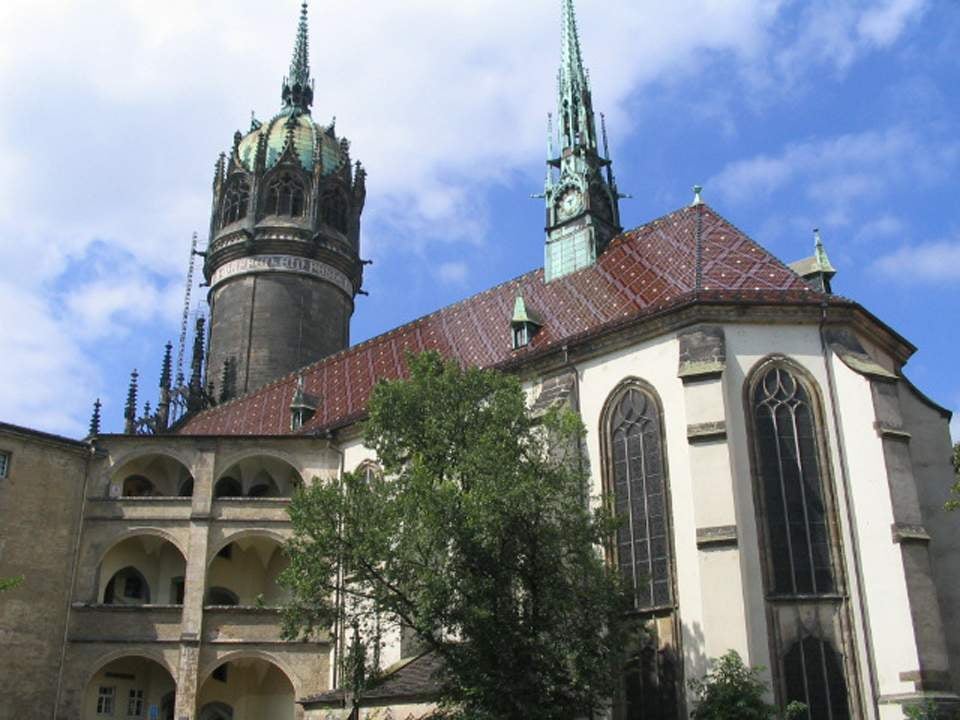
The trails of the great reformer Martin Luther, 500 years on from the Reformation, unveils a German region in a celebratory spirit, writes Rasika Sittamparam
An arrival at Wittenberg, often known as Lutherstadt (Luther’s city), is greeted by a 27-metre bible. This impressive construction – courtesy of the German Bible Society – commemorates Martin Luther’s translation of the bible from Greek to German, a feat that took just ten weeks.
The structure has a welcome sign for visitors, who may then brave a winding set of stairs or use the lift to ascend within. I choose the former, enjoying the view of the small city that will draw hundreds of thousands of visitors in October to mark 500 years since the Reformation, the greatest single revolution against the Roman Catholic Church and one that changed Christianity itself. From here you can glimpse the landmarks of the Reformation – Luther’s house, the All Saints’ Church where he posted his 95 theses that prompted the start of the Protestant Reformation.
Though a controversial figure, Luther is unsurprisingly a hero in this scenic town, now a Unesco World Heritage site. The short walk from the station to the main square, guided by quotes about Luther and signposts to various points of Lutheran interest, is a delight.
The solemnity of a memorial town is reflected by the rustic charm of the Luthergarten, with more than 500 trees planted by churches worldwide, where visitors are encouraged to reflect quietly on Lutheran spirituality.
But this isn’t just a place of pilgrimage, there’s also a party going on. There are restaurants and pubs celebrating Luther, who was also passionate about brewing and once declared: ‘When you have no beer, you have nothing to drink.’ I am presented with a tankard full of ‘Luther’s beer’ at the Schwarzer Baer pub. He is celebrated on every corner – with Che Guevara-style T-shirts of the great reformer’s face, street orchestra performers celebrating the works of the composers he inspired, and banners and pop-up stalls for history buffs and pilgrims alike.
The museums (Luther’s house and Melanchthon House) and churches contain thousands of original manuscripts and antiquities from the 1500s. But your final destination awaits: the Schlosskirche (All Saints Church) at the end of the market square, including his grave just metres from the front door.

The mood in the church is jubilant with Luther’s idea of liberation and salvation. Monteverdi rings through the space as a chamber choir prepares for a performance. ‘It’s the echo of the Reformation in music,’ a pastor says. ‘From the very beginning Luther wanted the congregation to join in the song.’
A 30-minute train journey away, Leipzig is itself a lively emblem of the art, writing and music that Luther’s Reformation inspired. I stay at one of Angela Merkel’s favourite hotels, the Hotel Fürstenhof, part of the Luxury Collection. This stunning hotel, built in the 18th century, shares a courtyard with the adjoining Evangelical-Reformed Church, where regulars included Mendelssohn.

Leipzig, however, belongs spiritually to Johann Sebastian Bach, who worked as a cantor at
St Thomas’s church and spent 27 years in the city. Bach’s groundbreaking compositions embody Luther’s penchant for creative freedom.
I feel the warm embrace of the city in the delectable goodness of the cinnamon apfelkuchen (steamed apple cake) at the Auerbachs Keller, which also has august connections. Not only was this lively basement restaurant frequented by Luther himself, it also featured in Goethe’s Faust. With its enormous portions of pork schnitzel with cheese-laden sauerkraut, it provides a satisfying finish to an enlightening trip to Luther’s Germany – a journey I recommend with the significant anniversary of the Protestant Reformation fast approaching on 31 October.
Rasika Sittamparam is a writer and Researcher at Spear’s








